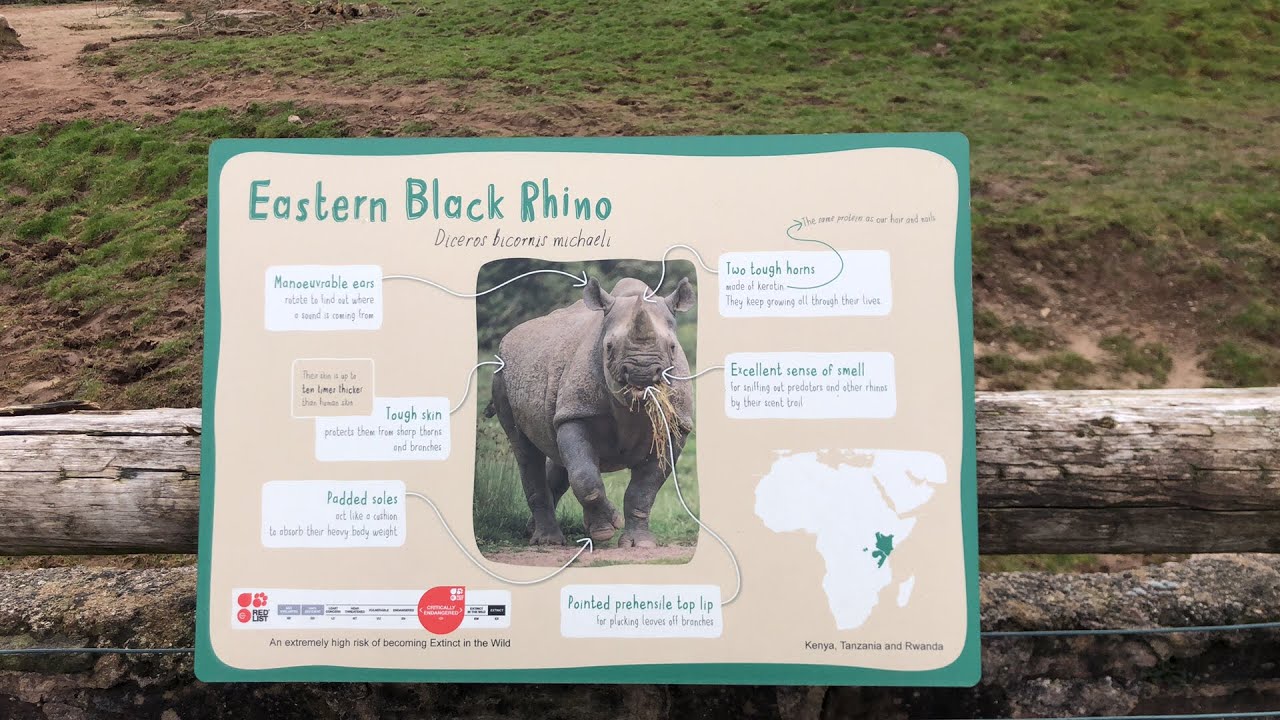Hello, fellow nature enthusiasts! Have you ever wondered about the captivating world of Black Rhinos? Well, you’re in for a treat today! We’re going on a thrilling adventure to explore these extraordinary creatures’ unique and fascinating aspects. So, buckle up and join me on this incredible journey!
Setting the Scene: A Day in the Life of a Black Rhino
Imagine a warm African savanna painted in hues of golden browns and bright greens. You’re strolling along, taking in the sights and sounds, when you suddenly spot an impressive figure. This isn’t just any creature – it’s the elusive Black Rhino!
Weighing in at a whopping 1,800 to 3,100 pounds, these bulky herbivores are a force to be reckoned with. While they may look intimidating, don’t worry – they’re generally more interested in munching on leafy greens than causing trouble.
The Nose Knows: A Rhino’s Remarkable Horn
One of the most striking features of the Black Rhino is its magnificent horn. These horns are composed of keratin (the same stuff that makes up our hair and nails) and can grow up to 55 inches long! Talk about being doubly impressive! If you know that some rhinos have two horns?
However, it’s not all fun and games regarding these horns. Sadly, the demand for rhino horn in traditional medicine and as a status symbol has led to a devastating surge in poaching. But don’t despair! Numerous organizations are working tirelessly to protect these gentle giants and their habitats.
A Surprisingly Swift Sprinter
You might think that with their bulky bodies, Black Rhinos wouldn’t be the most elegant creatures. Well, you’d be surprised! These robust mammals can reach speeds of up to 34 miles per hour! That’s faster than the average human sprinter. So, if you ever find yourself in a race with a Black Rhino, you might want to reconsider your chances.
Social (Dis)Connections: The Life of a Loner
Now, you might be wondering how Black Rhinos interact with one another. Interestingly, these creatures are pretty introverts. They generally lead solitary lives, only coming together briefly during mating season. However, mothers and calves share a strong bond, with the little ones staying by their mom’s side for up to three years.
Black Rhino Spa Day: A Mud Bath Extravaganza
After a long day of grazing and roaming the savanna, Black Rhinos love an excellent old-fashioned mud bath. They’ll roll around in the mud, coating their bodies in a thick layer of earthy goo. Not only does this help to keep them cool, but it also protects their skin from biting insects and parasites. It sounds like a day at the spa to me!
A Ray of Hope: Conservation Efforts
The future for the Black Rhino might seem uncertain, but don’t lose hope just yet! Thanks to conservationists’ tireless efforts, Black Rhinos’ population has gradually been on the rise. In fact, between 1995 and 2020, their numbers increased by a remarkable 50%! With continued support and awareness, we can all play a part in securing a brighter future for these amazing creatures.
And that, my friends, concludes our captivating journey into the world of the enigmatic Black Rhino. I hope you’ve enjoyed this adventure as much as I have and that you’ve discovered something new and fascinating about these incredible creatures. Let’s all continue to spread the word and support conservation efforts to ensure that future generations can also marvel at the wonders of the Black Rhino.
Summary of Transcript:
The video features a zookeeper at Chester Zoo sharing information about eastern black rhinos, a critically endangered species. The zoo has 8 black rhinos, ranging from 4 months to 23 years old. The male rhino, Gabe, has two horns made of keratin and can run at speeds up to 37 miles per hour. Poaching is a significant threat to the species, as the horns are taken for medical purposes. The zoo participates in a breeding program managed across Europe, accounting for about 1/10 of the species’ population. In 2019, five rhinos were selected from zoos across Europe to be released in Rwanda, following a multistage process including crate training and a soft release area. The zoo keeps track of the rhinos’ reproductive cycles through fecal samples, also analyzed in an African endocrinology lab. Rhino breeding is a long process, taking up to 17 months to give birth and 3-4 years between deliveries. Rhinos are herbivores adapted to eat shrubs and other plant materials with their prehensile top lip. They weigh between 800 to 1400 kilos and have poor eyesight, relying heavily on their sense of smell and hearing. The black rhinos are native to Kenya, Zimbabwe, Tanzania, and, more recently, Rwanda.
*****
*****
Source Description


